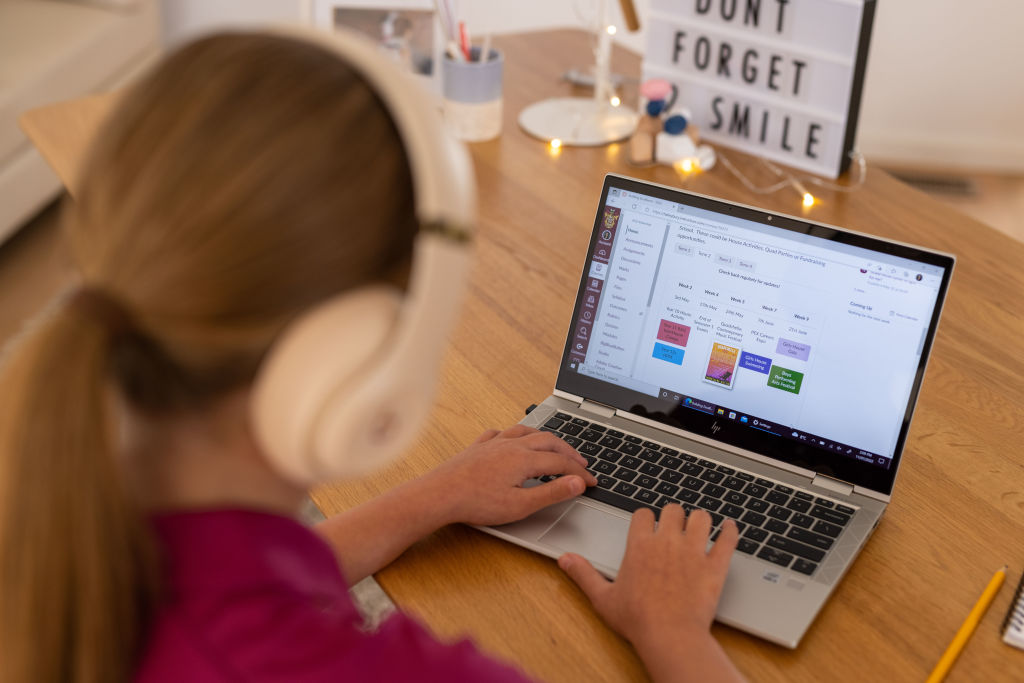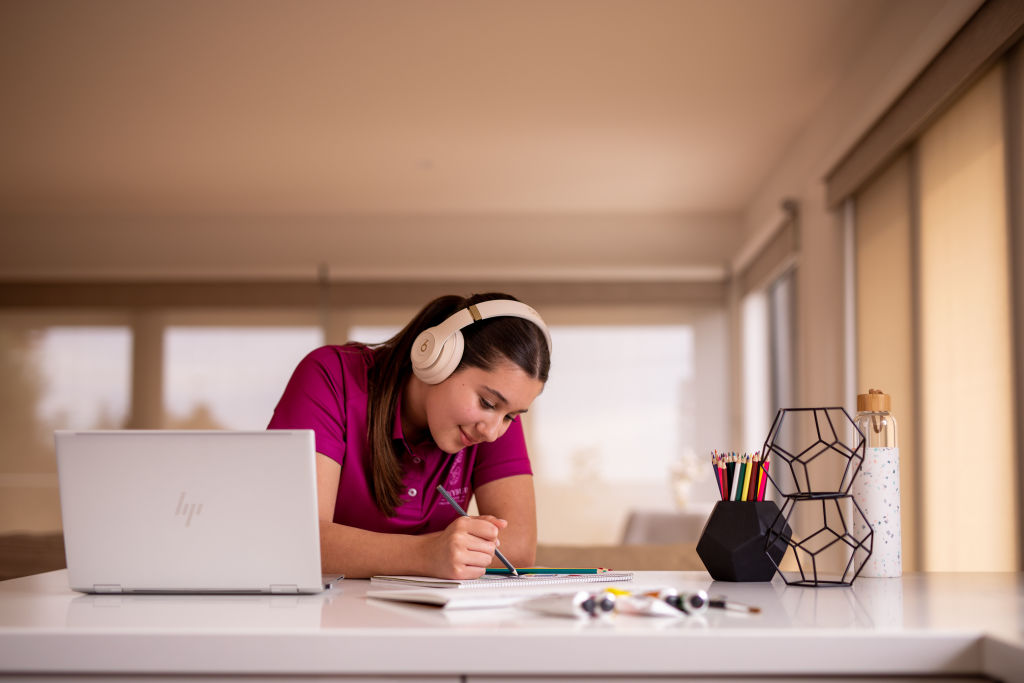Independent Schools Guide 2023: How schools are adopting hybrid learning post-pandemic

During lockdowns, teachers and students were suddenly thrust from the familiar confines of the classroom into the online world. Teachers taught children remotely with little planning and sometimes grappled with unfamiliar technology. The way students learned shifted dramatically.
Since those early days of the pandemic, hybrid learning has been gaining much more attention in schools. Under this model, teachers teach remotely, and some students attend class in person while others attend virtually from home.
“While some students and families may prefer in-person learning, others may prefer the convenience and flexibility of online learning, and
a hybrid model can accommodate these different preferences,” says Michelle Green, Chief Executive of Independent Schools Victoria (ISV).
“The hybrid model also allows schools to respond to changing circumstances, such as outbreaks of COVID-19, by quickly shifting to online learning if necessary.”
In its hybrid learning report, ISV acknowledges that adopting hybrid learning in many schools was rushed during the pandemic. Emergency arrangements often occurred without advance planning, teacher training or models of best practice.
But in future, these challenges could be reduced by ensuring teachers are trained to work in hybrid models and given the necessary technology and support, the report finds. It also highlights an opportunity for schools to reimagine how children can learn in ways that better reflect their needs.

Green says the growing popularity of online education and the increasing availability of technology have made it easier for schools to offer online programs. She notes that whether learning is in person or online, effective teaching should be engaging, interactive, and tailored to students’ needs and learning styles.
“In online learning, the educator may need to use different tools and strategies such as virtual discussions, online quizzes and real-time feedback to keep students engaged,” she says. “The teacher should also be proactive in addressing any technical issues and ensuring all students have access to the materials and resources they need.
“In comparison, in-person learning provides more opportunities for direct interaction and face-to-face communication between the teacher and students. The teacher can observe and respond to students’ nonverbal cues in real time, which can enhance learning and improve student engagement.”
Both methods have strengths and weaknesses, and what constitutes good teaching can depend on the context and needs of the student, Green says.
Abdullah Syed was among thousands of students forced to learn remotely during lockdowns. He loved the arrangement so much that he enrolled in Victoria’s first independent online school, Haileybury Pangea, for Year 12.
“During the lockdowns, if there’s anything remote learning taught me, it’s that I was more productive and more focused in online classes,” he says. “I could get more done in my day because there was no commuting or anything between classes and school and home.
“I found it quite effective, and that’s why I chose to take this opportunity to study my Year 12 at Haileybury Pangea.”
The 17-year-old recently started his first day from his bedroom desk and harbours ambitions to enter the medical field. He says the time he saves by learning online allows him time to indulge in his passions.
“If there’s anything I’m missing out on, it’s just peak-hour traffic time, but I’m glad I’m missing that,” he quips.
“I run, I swim, I play cricket and I’m a fan of soccer, and just going down to the oval and having a kick. That would not be possible if I were going to face-to-face school, so Pangea is taking care of both things: my time and my academics.”
This article appeared in Domain’s 2023 Independent Schools Guide.
We recommend
We thought you might like
States
Capital Cities
Capital Cities - Rentals
Popular Areas
Allhomes
More
- © 2025, CoStar Group Inc.







